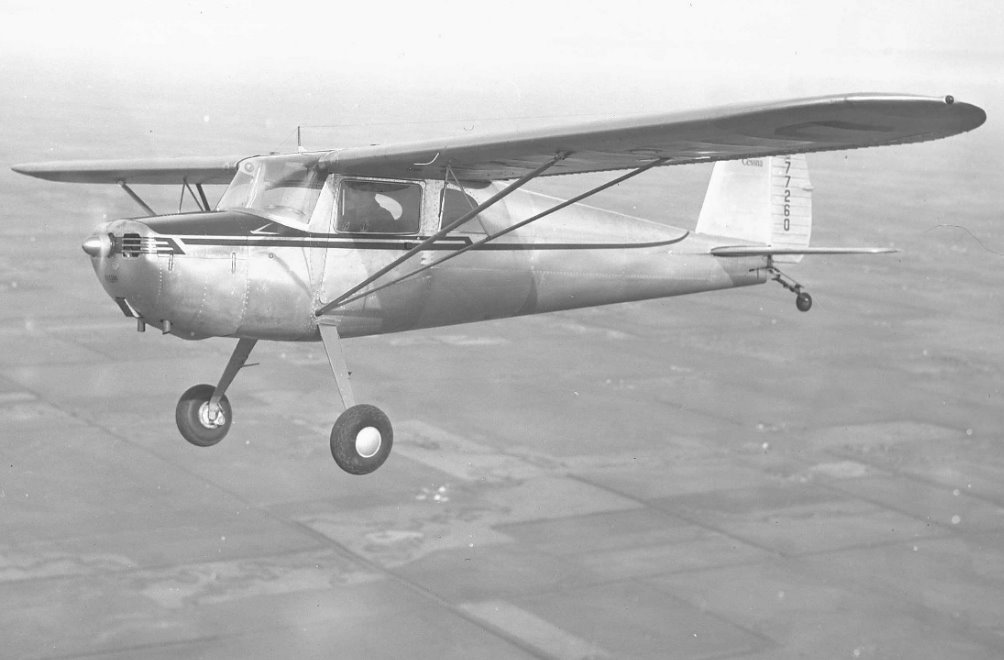Cessna s/n 12403 left the factory 22 Jan 1947 as NC2167N.
The plane was sold to Hamburg Airpark Inc. of Hamburg, New York.
Sold 10 Mar 1947 to Robert Knoche of Hamburg, New York.
Sold 23 Oct 1948 to William Hauck of Buffalo, New York.
Sold 19 Feb 1949 to Kellogg Mann Jr. of Cleveland, Ohio.
Sold 27 Mar 1950 to Buffalo Aeronautical Corp. of Buffalo, New York.
Sold 04 Apr 1950 to Henry Holland of Buffalo, New York.
Sold 04 May 1951 to Joseph Byrne of Santa Fe, New Mexico.
Sold 30 Jun 1952 to Knoxville Flying Service, Inc. of Alcoa, Tennessee.
Sold 04 May 1954 to Nina Gibson of Knoxville, Tennessee.
Sold 29 Oct 1954 to Omar Midyett of East St. Louis, Illinois.
Sold 11 Dec 1954 to Associated Pilots of St. Louis, Inc. of Webster Groves, Missouri.
Sold 20 Sep 1955 to M. and S. Flying Club, Inc. of Hullsboro, Illinois.
Sold 15 Oct 1955 to Donald Albert of LaSalle, Illinois.
Sold 10 Oct 1956 to Aero Traders of Milan, Michigan.
Sold 23 Jan 1957 to C. F. Wible of Sebewaing, Michigan.
Sold 30 Jan 1960 to Leo Gutzmer of Saginaw, Michigan.
Sold 11 Apr 1960 to Wesley & Arleigh Beebe of Flushing, Michigan.
Sold 06 Jul 1964 to Jerry Floyd Auto Sales of Flushing, Michigan.
Sold 07 Jul 1964 to John Powers of Clawson, Michigan.
Sold 04 Mar 1983 to Edward Weeks of Flint, Michigan.
Registration Number Changed on 25 Oct 1983 to N140TW.
Sold 01 Dec 1986 to Dennis Harbin of Charlottesville, Virginia now in Louisa, Virginia.
 The ribs are riveted to the spar. I modified the long head of my rivet squeezer to fit loosely over the spar flange. There may be some heavy rivets it won't squeeze without bending but I mostly use it for 1/8" and 3/32" rivets so I don't think it will hurt it. The biggest problem I had was my rivet gun hasn't been used in years and the air valve was stuck. I also discovered that I do so little riveting I don't own any bucking bars. With 9" of snow falling I faked it and moved on.
The ribs are riveted to the spar. I modified the long head of my rivet squeezer to fit loosely over the spar flange. There may be some heavy rivets it won't squeeze without bending but I mostly use it for 1/8" and 3/32" rivets so I don't think it will hurt it. The biggest problem I had was my rivet gun hasn't been used in years and the air valve was stuck. I also discovered that I do so little riveting I don't own any bucking bars. With 9" of snow falling I faked it and moved on.
 The skin below the tank is riveted to the spar and we're ready to set rivets on the skin and the drag wire brackets. Then the outboard skin can go back on. This was a very long day of going slow and careful. I don't want to have to redo this.
The skin below the tank is riveted to the spar and we're ready to set rivets on the skin and the drag wire brackets. Then the outboard skin can go back on. This was a very long day of going slow and careful. I don't want to have to redo this.



















 I realized I have several 2'x4' plastic tables from Sam's which we use in the shop and for our booth at fly-ins. They are adjustable for height from 24" to 36" so they make nice work tables. Three of them nicely support the wing. After rem0ving the clecos I gently worked the spar loose. With a stool as a support at the root end the spar came off easily.
I realized I have several 2'x4' plastic tables from Sam's which we use in the shop and for our booth at fly-ins. They are adjustable for height from 24" to 36" so they make nice work tables. Three of them nicely support the wing. After rem0ving the clecos I gently worked the spar loose. With a stool as a support at the root end the spar came off easily.






























